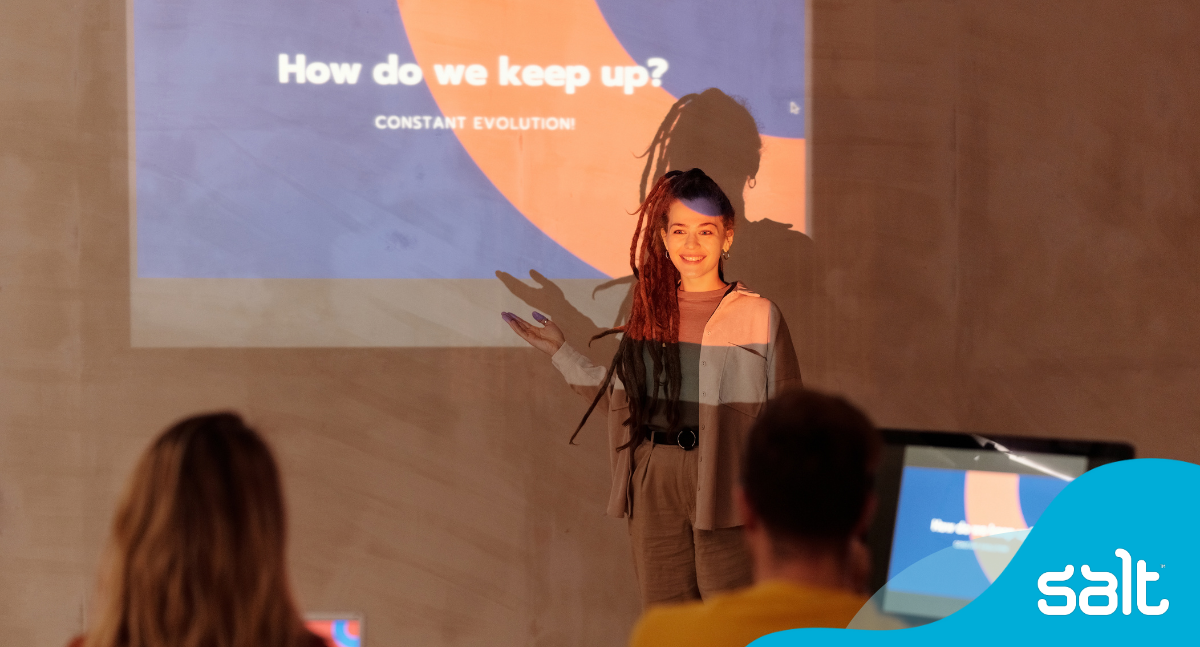
Achieving success is about building the right mindset to achieve the goals you’ve set yourself. Beyond a focus on what you want to achieve, pillars of success can help sustain you on your journey and develop the resilience to continue learning and growing.
Something you’ll have read countless times in the many productivity articles out there is that success is the result of ‘hard work’. As Habio’s blog on this topic, which gave us the basis of these 6 pillars of success, puts this:
“There are two kinds of people out there: those who walk through life wondering what could have been, and those who actually prepare themselves to seize and take advantage of opportunities.”
The above might be true albeit judgmental – but what does it actually mean?
Success looks different to everyone – so with that in mind, how can anyone deliver a formula to ‘achieve anything you want in your life’? The key is in the approach.
Setting manageable goals and committing to successful behaviors stops us devolving into an overwhelmed or negative headspace. The below approach can help you develop the right mindset to achieve your goals.
What is a pillar of success?
There are many variations of this concept but ultimately a pillar of success is an elemental key to a successful mindset. So – a behaviour or outlook that you seek to develop to improve your own productivity and motivation so you can achieve your goals.
Lots of choice is often something we thig we want, but it’s also what overwhelms us. As psychologist and author Barry Schwartz outlines in his many studies, the ‘paradox of choice’ is that it can also be paralyzing.
Realising an ambitious achievement means pushing yourself and ‘working hard’ – but a common pitfall is where to start? Or even how to start? This is where pillars of success can help.
Six pillars of success to pursue even the seemingly unachievable are:
- Staying consistent and focused
- Developing a grit and growth mindset
- Know your strengths and weaknesses
- Strive to try new things
- Be ambitious and motivated
- Build healthy habits
These are all well and good – but with a busy professional and personal life how do they slot in? We asked our expert consultants to share some top strategies that help them with embracing pillars of success in their daily lives.
For each of these pillars we’ve curated some top tips and approaches to help you achieve whatever your ambition might be!
1. Stay consistent and focused
Consistency is hard to achieve. Especially in trying and uncertain times. One reason you can lose focus and motivation is because you’re thinking about the outcomes – instead of the process. This pillar of success is about committing to the journey to achievement in a way that works for you.
In his blog, James Clear, author of Atomic Habits, explains how to form successful habits that stick is about learning to enjoy the process:
“Any habit can be broken down into a feedback loop that involves four steps: cue, craving, response, and reward. The Four Laws of Behavior Change are a simple set of rules we can use to build better habits. They are (1) make it obvious, (2) make it attractive, (3) make it easy, and (4) make it satisfying.”
2. Develop grit and growth mindset
Another reason you might struggle to be productive towards your goal is negative feedback or perceived failure – which can be demoralizing. The key to developing a ‘grit and growth mindset’ is to keep the bigger picture in mind.
An important aspect of an Agile mindset is the concept of Minimal Viable Product (MVP). In this case, failing is a learning opportunity. It’s expected you’ll get it wrong the first time, because you don’t know what right looks like yet. This approach allows you to continue to develop based on the feedback you receive. It’s an emotional process in some cases, and means challenging your initial vision, but investigate the reasons for the feedback and make solutions to these the focus in your next stage. Read more on FortyThree.Me.
Gendered constructs and systemic bias mean failure as a construct takes on different significance to different people. In her podcast series and book How to Fail, Elizabeth Day celebrates failures with her varied guests to encourage a mindset that failing is learning, and that it’s part of the journey to success.
“If you can remove your ego from a process, then there really isn’t any difference between success and failure. They’re just both parts of a process. And that you shouldn’t look at a failure as something terrible, it just is what it is and you shouldn’t look at success as something great, it just is what it is.”
Elizabeth Day, How to Fail: Everything I’ve Ever Learned From Things Going Wrong
3. Know your strengths and weaknesses
Knowing your strengths and weaknesses is another pillar of success, and is crucial to producing your best work and meeting your goals. Self-understanding builds self-confidence. If you’re confident in what you can achieve, and know where and when to ask for help, then you are more likely to achieve success in a way that benefits and includes everyone.
You may have heard of SWOT analysis in terms of business strategy – identifying strengths, weaknesses, opportunities and threats to help plan effective growth. The same matrix can be applied to your way of working. A personal SWOT makes the process of determining where you excel and where you need to develop or delegate more simple, visual and actionable. Creately has lots of free tools and information that can help you kickstart that process.
4. Strive to try new things
New experiences and trying new things enrich our outlook and reinforce a ‘bigger picture’ perspective that helps us understand failure and blockers in a relative way. In the grand scheme of things.
One example of this pillar of success is striving to adopt a T-shaped learning model. Having a broad area of interest and continually learning new things (the top of the T) and deep diving into one specialism (the bottom of the T) can help you make connections that lead to new ideas and innovations. Developments in different areas, particularly adjacent to your primary role, could be beneficial in your area as well. This concept is contrasted with the more traditional I-shaped learning, where you choose a specialism and become an expert in it. Read more about developing a T-shaped skillset here from CFI.
5. Be ambitious and motivated
Ambition and motivation are intrinsically linked. As powerful an impetus as they are for productivity, there’s risk involved in driving yourself to achieve. In most cases success is a marathon and not a sprint. So it’s important to take care of yourself and be forgiving of yourself to build resilience and avoid burn out.
It can help to evaluate what motivates you when it comes to this pillar of success. Extrinsic motivation is external, like rewards and validation, money or recognition. Intrinsic motivation is personal. It’s how you feel about accomplishing a task or project. There’s lots of discussion around what the most effective means of motivation is. It can be paralyzing to lose motivation, and if you experience a set back or burn out after an intense sprint, this can lead to a lack of productivity and negative feelings towards yourself and your abilities.
Building resilience is important. Drive and intention doesn’t define effects. There are often lots of circumstances beyond your control at play. Learning to temper your reliance on extrinsic motivation, and taking the time to understand and cater to your intrinsic motivations, can help you navigate the ups and downs on your road to achieving your goal.
6. Build healthy habits
Achieving success is a daily practice. Any ambitious goal can be broken into steps – or habits. And a common pitfall is being intimidated by a big project or outcome because it seems too big and unachievable, you’re not sure where to start
Building habits that promote your health and wellbeing are key to success being sustainable and maintaining productivity long-term.
There are lots of great resources to help you build healthy habits – here are a few of our favourites:
- Predictably Irrational by Dan Ariely
- Atomic Habits by James Clear
- Eat that Frog! By Brain Tracy
- Why Has No One Told Me This Before? By Dr Julie Smith
- Indistractable: How to Control Your Attention and Choose Your Life by Nir Eyal
It’s important not to get too overwhelmed by research – especially if it means you end up with an even longer to-do list! Build habits one at a time and focus on what feels right to you. That applies to these pillars for success too.
If you can find enjoyment and witness the positive impact of one habit, it will reinforce a feedback loop that helps you construct more positive habits without overloading yourself with too much to manage.


